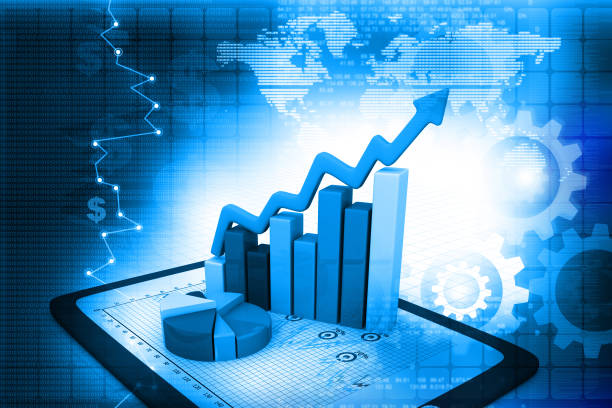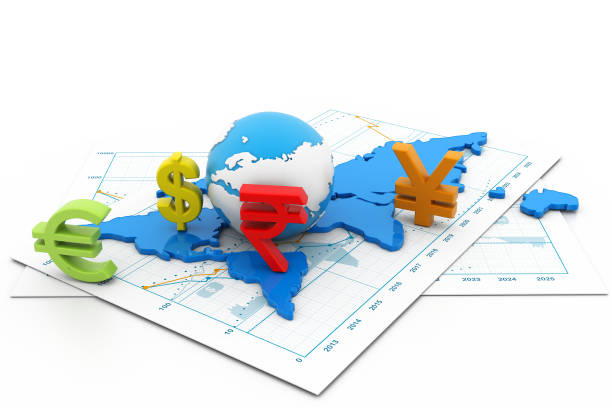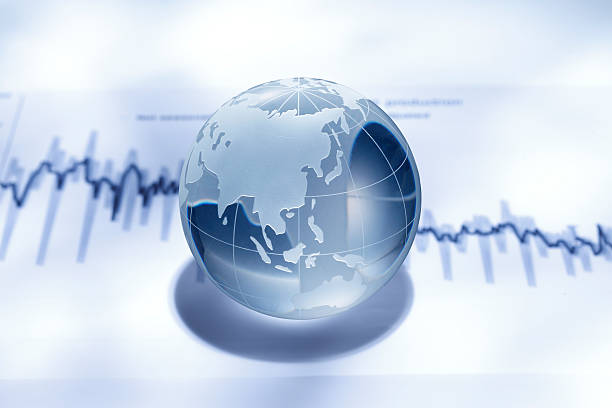The global economy is a complex, interconnected system influenced by a multitude of factors, including technological advancements, geopolitical developments, and demographic shifts. Understanding global economic trends is crucial for businesses, policymakers, and investors as they navigate an increasingly dynamic and uncertain environment. This article explores key global economic trends, their implications, and the factors driving these changes.

Technological Advancements and the Digital Economy
1. Digital Transformation: Technology is reshaping industries and economies. The rise of digital platforms, e-commerce, and cloud computing is driving efficiency, innovation, and growth. Businesses are leveraging data analytics, artificial intelligence (AI), and automation to enhance operations, reduce costs, and offer new products and services.
2. Industry 4.0: The fourth industrial revolution, characterized by the integration of IoT (Internet of Things), AI, and robotics, is revolutionizing manufacturing and production processes. Industry 4.0 is enabling smart factories, predictive maintenance, and supply chain optimization, leading to increased productivity and competitiveness.
3. Fintech Innovations: Financial technology (fintech) is transforming the financial services industry, making transactions faster, more secure, and more accessible. Innovations such as blockchain, cryptocurrencies, and digital payments are disrupting traditional banking and financial systems.
Geopolitical Shifts and Trade Dynamics
1. Geopolitical Tensions: Geopolitical developments, such as trade disputes, regional conflicts, and changing alliances, impact global economic stability. For example, ongoing trade tensions between major economies like the U.S. and China can affect global supply chains, investment flows, and market confidence.
2. Regional Trade Agreements: Trade agreements and regional economic partnerships are shaping global trade dynamics. Agreements such as the Regional Comprehensive Economic Partnership (RCEP) and the United States-Mexico-Canada Agreement (USMCA) are influencing trade patterns and economic relationships.
3. Supply Chain Resilience: The COVID-19 pandemic highlighted vulnerabilities in global supply chains, prompting companies to rethink their strategies. There is a growing emphasis on building resilient and diversified supply chains to mitigate risks and ensure continuity.

Environmental Sustainability and Climate Change
1. Climate Action: Addressing climate change is becoming a central focus for governments and businesses. Initiatives to reduce carbon emissions, transition to renewable energy, and promote sustainability are driving investment in green technologies and sustainable practices.
2. ESG Criteria: Environmental, social, and governance (ESG) criteria are increasingly influencing investment decisions. Investors are seeking companies that demonstrate a commitment to sustainability, ethical practices, and corporate responsibility.
3. Circular Economy: The concept of a circular economy, which aims to minimize waste and maximize resource efficiency, is gaining traction. Companies are adopting circular practices, such as recycling, reusing materials, and designing products for longevity.
Demographic Changes and Workforce Dynamics
1. Aging Populations: Many developed countries are experiencing aging populations, leading to a decline in the working-age population and increased pressure on social welfare systems. This demographic shift has implications for labor markets, productivity, and economic growth.
2. Urbanization: Rapid urbanization is reshaping economies and creating new opportunities and challenges. Growing cities are driving demand for infrastructure, services, and housing, while also presenting challenges related to congestion, pollution, and inequality.
3. Workforce Transformation: The nature of work is evolving due to technological advancements and changing workforce preferences. Remote work, gig economies, and the rise of digital skills are transforming labor markets and organizational structures.
Economic Inequality and Inclusive Growth
1. Income Inequality: Economic inequality remains a significant concern, with disparities in income and wealth distribution impacting social cohesion and economic stability. Efforts to address inequality include policies aimed at improving access to education, healthcare, and economic opportunities.
2. Inclusive Growth: There is a growing emphasis on promoting inclusive growth that benefits all segments of society. Policies and initiatives focused on reducing poverty, enhancing social safety nets, and fostering economic participation are crucial for achieving sustainable and equitable development.
3. Social Mobility: Improving social mobility and providing opportunities for upward economic mobility are key to addressing inequality. Education, skills development, and targeted support for disadvantaged communities are essential components of this effort.

Global Economic Outlook and Future Trends
1. Post-Pandemic Recovery: The global economy is in the process of recovering from the impact of the COVID-19 pandemic. The pace and sustainability of recovery vary by region and industry, with factors such as vaccination rates, fiscal policies, and consumer behavior influencing the trajectory.
2. Digital Economy Growth: The digital economy is expected to continue its rapid growth, driven by technological advancements, increased internet penetration, and evolving consumer preferences. Companies that adapt to digital trends will be well-positioned for success.
3. Geopolitical Realignments: Geopolitical shifts, such as changing power dynamics and emerging regional influences, will shape the global economic landscape. Businesses and policymakers need to stay informed and adaptable to navigate these changes effectively.
4. Sustainability and Green Investment: Sustainability will remain a key driver of economic activity, with increasing investment in green technologies, renewable energy, and sustainable practices. Companies and governments that prioritize environmental stewardship will gain a competitive edge.
5. Future of Work: The future of work will continue to evolve, with trends such as remote work, automation, and digital skills shaping labor markets and workforce dynamics. Embracing flexibility and innovation will be crucial for organizations and employees.
Conclusion
Global economic trends are dynamic and multifaceted, influenced by technological advancements, geopolitical developments, environmental concerns, and demographic shifts. Understanding these trends and their implications is essential for making informed decisions and navigating an increasingly complex economic landscape. By staying informed and adaptable, businesses, policymakers, and individuals can better position themselves to capitalize on opportunities and address challenges in the evolving global economy.

